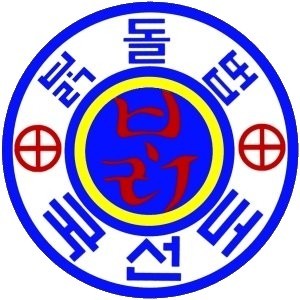
Kouk Sun Do, a form of Korean yoga that promotes physical and mental fitness, is a practice Professor Marc Meyer introduced to Northeastern this year. Meyer believes that Konk Sun Do is more peaceful than Asian martial arts. “It is seeing what Asian martial art is like without seeing an aggressive form of that culture, not Tae Kwon Do but Kouk Sun Do,” said Meyer.
After all the hype, I decided to give Konk Sun Do a try. I attended a class that focused just on the meditation portion, Haeng Gong. I felt an intense relaxation that calmed me — an uncommon experience as a third year student in college. Meyer emphasized the importance of a clear mind in the process of meditation. Focusing solely on breathing, especially breathing from your core, is essential. “It’s controlled breathing, meditative breathing, inner peace; setting aside all the business of the world and really getting back to yourself,” said Meyer. “Getting back to an unbusy mind.”
The class was broken into four main parts. The introductory part to the course gave a historical background on Kouk Sun Do and why Meyer decided to bring these practices to Northeastern. The initial warm-up part was light stretching and exercise, and the meditation part was followed by a spiritual dance that honed in on the powers we can find within ourselves.
“You are one with the Universe.” said Meyers. Kouk Sun Do is centered on the idea that we can be fully connected to our world in a peaceful manner and when we leave this meditation, we bring these ideas about unity and peace into our real world to share with others. “There is very much of a spiritual side to [Kouk Sun Do], which is your connection to the universe,” said Meyer about the mediation aspect, “it is very relevant to religious and non-religious people.”
The meditations that come from Kouk Sun Do can be simple or complex in nature. The art of breathing really comes into play when meditating. In this class, we focused on two ways of breathing: head breathing and core breathing. For head breathing, we focused on our mind and the way the air flowed through our nostrils and out through our mouths — even placing our hands on our foreheads to mimic the breathing pattern. For core breathing, we focused on how the diaphragm moved up and down and how the core inflated and deflated with the flow of the air. Both ways were calming, but core breathing took energy to really change the way one thinks about breathing.
Not only does Kouk Sun Do have properties that help with mental and physical relaxation and meditation, but it also has many health benefits as well. During the class, we focused our attention to different pressure points that help relieve different organs and parts of the body from physical distress. For instance, a pressure point in the middle of your foot may help with relieving your kidneys from any uncomfort. Meyer says that it works in a way similar to acupuncture by using these different pressure points to help with the health and soundness of your body.
The form of Kouk Sun Do other students and I were introduced to is not the traditional practice that can be found in Korea; Meyer was actually asked to modify this traditional practice for Western Culture. “The Korean culture of Kouk Sun Do is lights off; [you] follow the black belt instructor and sort of get [the hang of] it over time,” said Meyer. “This instruction is different: Lights on, broken down step-by-step, with talk[ing] and interact[ion]. In a way, [we] learn together.”
As part of the introduction to Northeastern, Meyer has parted from the traditional ways of Kouk Sun Do to give a class that has more meaning to Western culture and younger people. “You usually learn sets of 25 all leading to different degrees with different types of belts,” said Meyers. “We decided to break them up into sets of 10 and teach them step-by-step and explain what is going on in each posture, what the breathing is like, what the emphasis is on the body.” Meyer also changed the music from being solely traditional Korean music to incorporating more contemporary genres and styles to make the physical part of Kouk Sun Do more energizing. Finally, Meyer instructs in a more in-depth way than traditional instructors would. He wants this to be an encouraging and open session where everyone will learn together.
Although the session was an hour and a half long, Meyer encouraged all of the students to come back for another session to gain more knowledge about the powers of Kouk Sun Do. “We are not [necessarily] thinking of touching thousands of people, but hundreds of people deeply,” said Meyer. “[We want to] give them something they will enjoy the rest of their lives.”